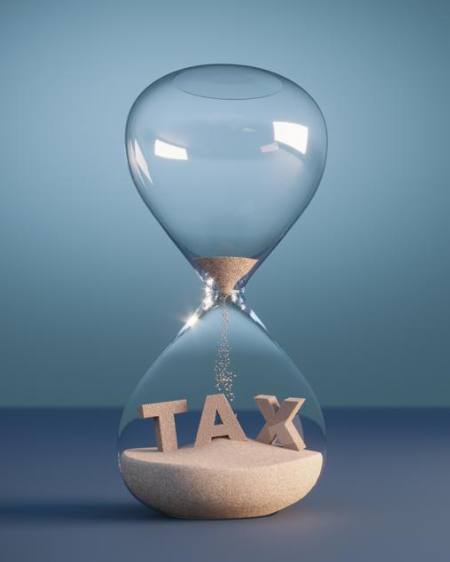As tax season approaches, many people find themselves scrambling to get their documents in order. If you’re unsure about which forms you need or where to find them, don’t worry. This guide will help you get organized and on track to file your taxes correctly and on time.
Important Filing Deadlines
The deadline for filing your individual tax return is April 15th. You must either file your return or request an extension by 11:59 PM on that day. Keep in mind that filing an extension gives you six extra months to submit your return, but it doesn’t extend the deadline to pay any taxes due. If you owe taxes, those must be paid by the 15th, or you could face penalties and interest.
If you’re filing for a partnership or S Corporation, the deadline is earlier—March 15th. C Corporations, on the other hand, must file by April 15th as well, with the same extension rules applying.
Documents You’ll Need for Tax Filing
Before diving into the specifics of the forms you’ll receive, let’s cover the basics of what to gather:
- Tax Identification Numbers:
- Social Security Numbers (SSNs) for yourself, your spouse, and any dependents.
- Employer Identification Number (EIN) if you own a business.
- Last Year’s Tax Return: While not strictly required for filing, reviewing last year’s tax return can help identify any significant changes in your finances or carry-forward items, which might affect your filing this year.
Common Forms You Should Expect
Here are some of the forms you’re likely to receive:
- Form W-2: This is the most common form for salaried workers, reporting the wages you’ve earned and the taxes withheld.
- 1099 Forms: You may receive a variety of these, depending on your income sources:
- 1099-INT: For interest earned, typically from your bank.
- 1099-NEC: For self-employed contractors or freelancers, issued by anyone who paid you $600 or more.
- 1099-MISC: For rental or royalty income.
- 1099-G: For unemployment benefits.
- 1099-R: For distributions from retirement accounts.
- 1099 Composite/Consolidated: If you have a taxable brokerage account, this form will summarize your investment income, including capital gains, dividends, and interest.
- Schedule K-1: If you’re a shareholder in an S Corp or a partner in a partnership, this form reports your share of income from the entity.
- Form 1095-A: If you have health insurance through the marketplace, you’ll need this form to report premiums and tax credits.
- Form 1098: If you have a mortgage, this form reports the mortgage interest you’ve paid, which may be deductible.
- Charitable Contributions: Be sure to gather receipts for any donations you made throughout the year. These will help you substantiate itemized deductions.
- IP PIN: If you were a victim of identity theft and requested an Identity Protection PIN, keep this document handy for e-filing.
These are just a few examples, but they cover most of the documents you’ll need to file your taxes.
Last-Minute Moves to Lower Your Tax Bill
If you’re looking for ways to reduce your tax bill before filing, here are six strategies you can still take advantage of:
- Solo 401(k): If you’re self-employed or own an S Corp, you can contribute to a Solo 401(k) and lower your taxable income. For other business structures, you can contribute up to $69,000 (depending on your income). This can provide significant tax savings.
- SEP IRA: A SEP IRA allows you to contribute up to 25% of your compensation (if you’re an S Corp) or about 20% of your profits (for other entities). This contribution is tax-deductible, reducing your taxable income.
- 401(k) Profit Sharing: If you have employees, you can set up a profit-sharing plan and contribute before the filing deadline. This is applicable for both employees and owners.
- Health Savings Account (HSA): If you have an HSA and didn’t max it out, there’s still time to contribute for last year. The contribution limit for 2024 was $8,300. If you’re not using payroll deductions, consider setting up your HSA with a provider like Fidelity to finalize any remaining room for contributions.
- Backdoor Roth IRA: High earners who can’t directly contribute to a Roth IRA can still take advantage of a backdoor Roth IRA. By making a nondeductible contribution to a traditional IRA and then converting it to a Roth, you can enjoy tax-free growth in the future. However, make sure you don’t have any other pre-tax IRA balances to avoid unnecessary taxes on the conversion.
- Cash Balance Plan: For business owners, setting up a cash balance plan can allow you to defer large amounts of income—up to $100,000 or more annually, depending on your age. This is a more complex option that requires an ongoing commitment, but it can lead to substantial tax savings in the long run.
Proactive Tax Planning
The key to minimizing your taxes isn’t waiting until the last minute; it’s proactive planning throughout the year. By taking the time now to review your tax strategy, you can avoid surprises and ensure you’re well-prepared for next year.
Start making tax-smart moves today, file your taxes on time, and begin planning for next year. It’s time to switch from a reactive to a proactive approach to tax planning.
